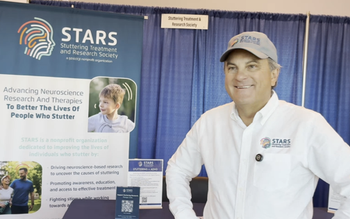
Nearly Half of Kids in Inpatient Psychiatric Program Receive Antipsychotics
In a decade-long study of antipsychotic prescribing for hospitalized children and adolescents, researchers found that antipsychotics were used in 44.3% of patients and were often prescribed for behavioral disorders, PTSD, and other anxiety disorders as well as psychotic disorders.
In a decade-long study of antipsychotic prescribing for hospitalized children and adolescents, researchers found that antipsychotics were used in 44.3% of patients and were often prescribed for behavioral disorders, PTSD, and other anxiety disorders as well as psychotic disorders.
John Goethe, MD, director of the Burlingame Center for Psychiatric Research and Education at Hartford Hospital’s Institute of Living, told APA symposium attendees that there has been increased use of antipsychotics in children and adolescents “for non FDA-approved indications.” For instance, one study found that from 1993 to 2002, there was an approximately 6-fold national increase in the absolute number of office-based visits by children and adolescents that included prescription of antipsychotic medications.1
Many psychiatrists and other mental health professionals have expressed concerns about the metabolic and endocrine effects of these drugs and, more recently, about their effects on brain tissue,2 according to Goethe.
To track the use of antipsychotics, Goethe and colleagues studied consecutive inpatient psychiatric admissions between January of 2000 and June of 2010 for all 5 to 17 year olds (n = 3851). They analyzed prevalence of use, demographics, diagnoses, length of stay, use of first-generation versus second-generation antipsychotics, polypharmacy, and other factors. They found that a higher proportion of the antipsychotics were prescribed for children aged 5 and 12 years than for teenagers 13 to 17 years old (51.7% versus 41.7%, respectively).
Prescribing also varied by diagnosis. For example, 76% of patients with psychosis (eg, schizophrenia, schizoaffective disorder, bipolar disorder, and major depressive disorder with psychotic features) received antipsychotics compared with only 24% of patients with depression without psychosis. Forty-five percent of patients with such behavioral disorders as ADHD or conduct disorder were given antipsychotics and 44% of patients with PTSD received them. The percentage for other anxiety disorders was 31%.
Variables associated with antipsychotic use, Goethe said. These included male gender, age 12 years and under, being nonwhite, and a length of stay 13 days or longer. Patients receiving anticonvulsants, lithium, benzodiazepines, or antidepressants, Goethe added, were at increased risk of being treated with an antipsychotic.
The researchers also found that combining first and second-generation antipsychotics was rare, and accounted for only 2.2% of the total. As expected, 94% received second-generation antipsychotics, while only 5.9% received first-generation antipsychotics. Antipsychotic use decreased from 47% to 44% between 2000 to 2003 and 2006 to 2010 (P = 0.044). “We were surprised by this finding,” Goethe said. “However, if you look at each diagnostic group separately, you find there is no significant change.”
Goethe added that it is possible that the risk/benefit ratio for antipsychotic use differs among patients and that based on the controversies expressed in the literature, there “is a major need for additional research in this area.”
References:
References1. Olfson M, Blanco C, Liu L, et al. National trends in the outpatient treatment of children and adolescents with antipsychotic drugs. Arch Gen Psychiatry. 2006;63:679-685.
2. Ho BC, Andreasen NC, Ziebell S, et al. Long-term antipsychotic treatment and brain volumes: a longitudinal study of first-episode schizophrenia. Arch Gen Psychiatry. 2011;68:128-137.
Newsletter
Receive trusted psychiatric news, expert analysis, and clinical insights — subscribe today to support your practice and your patients.

















